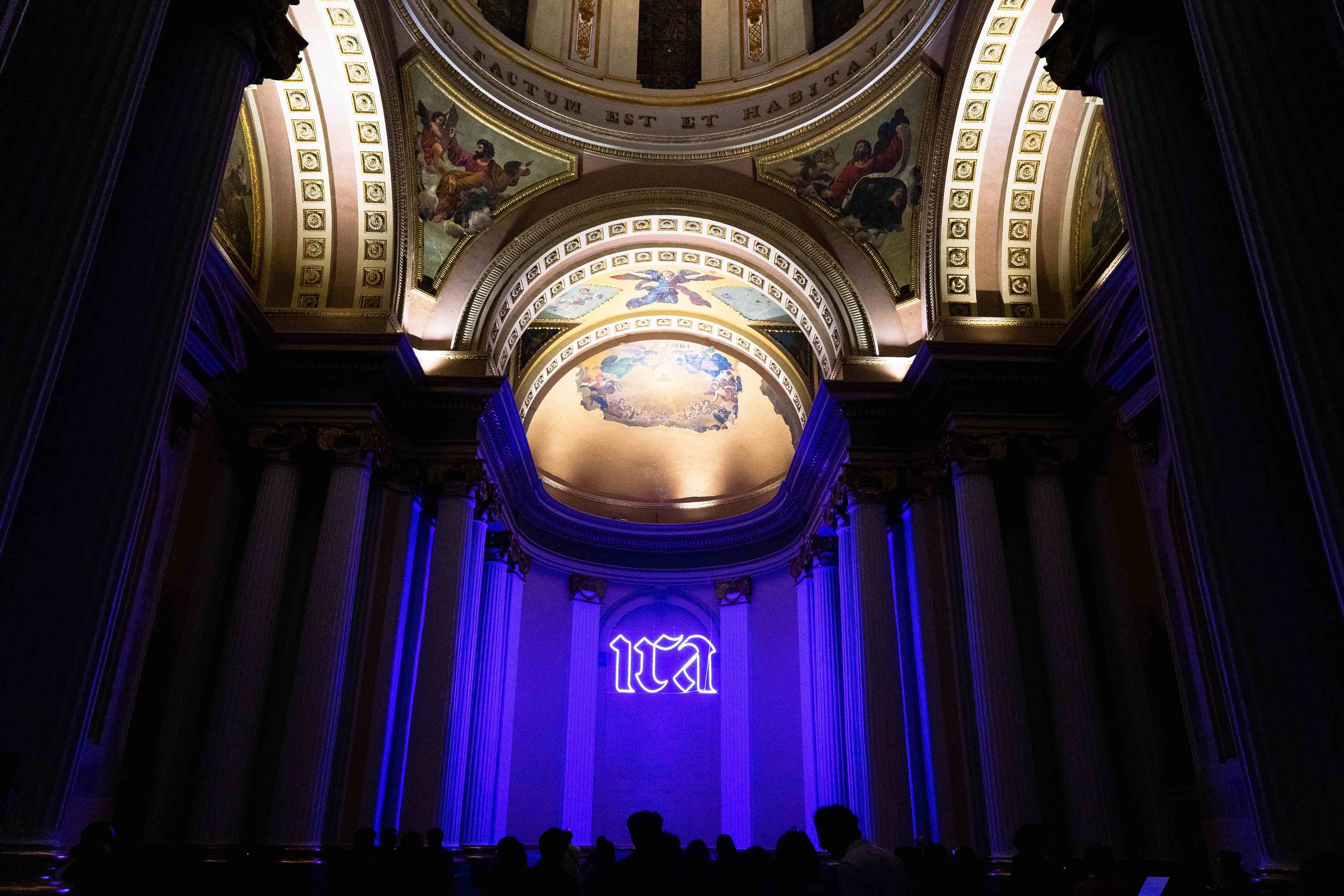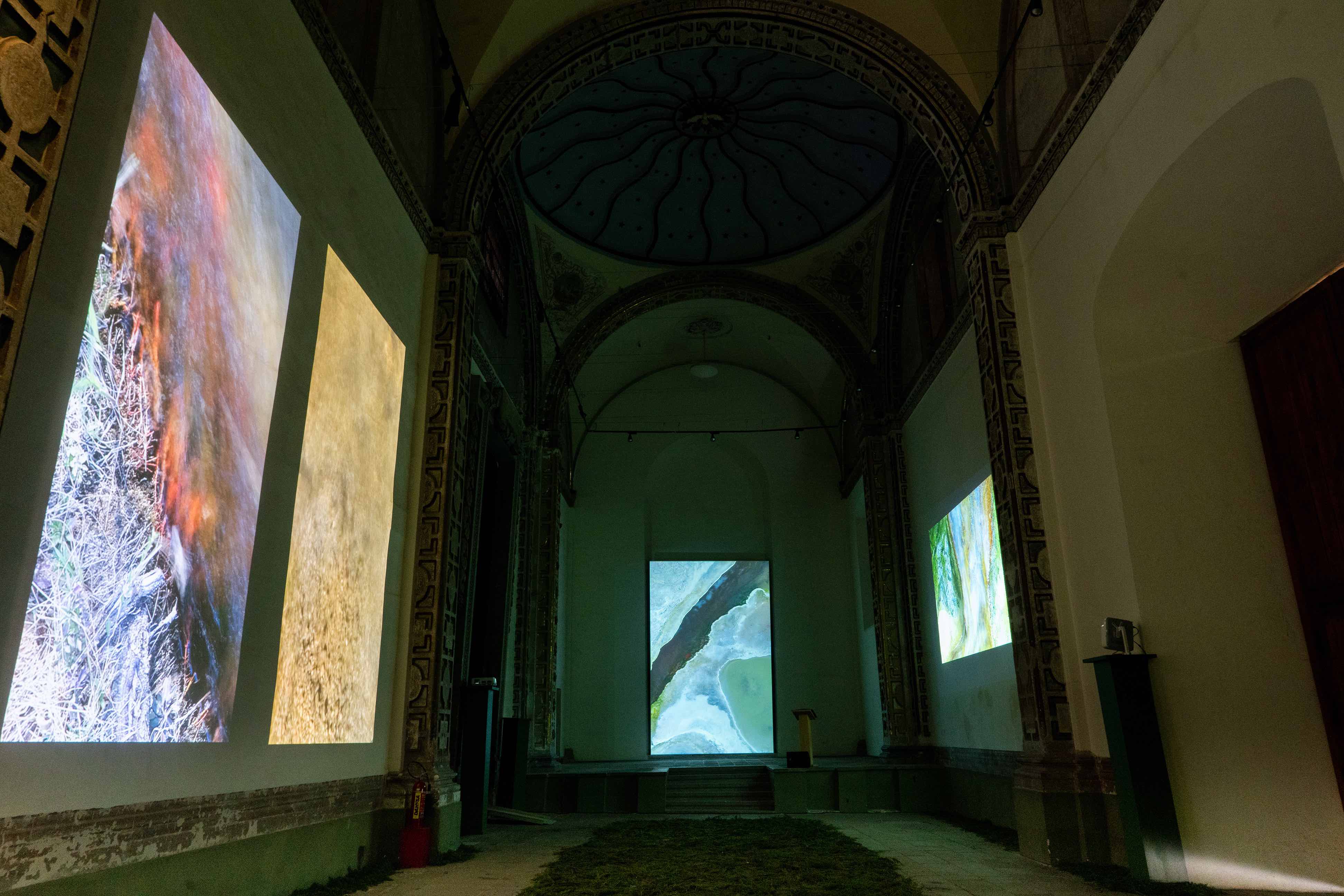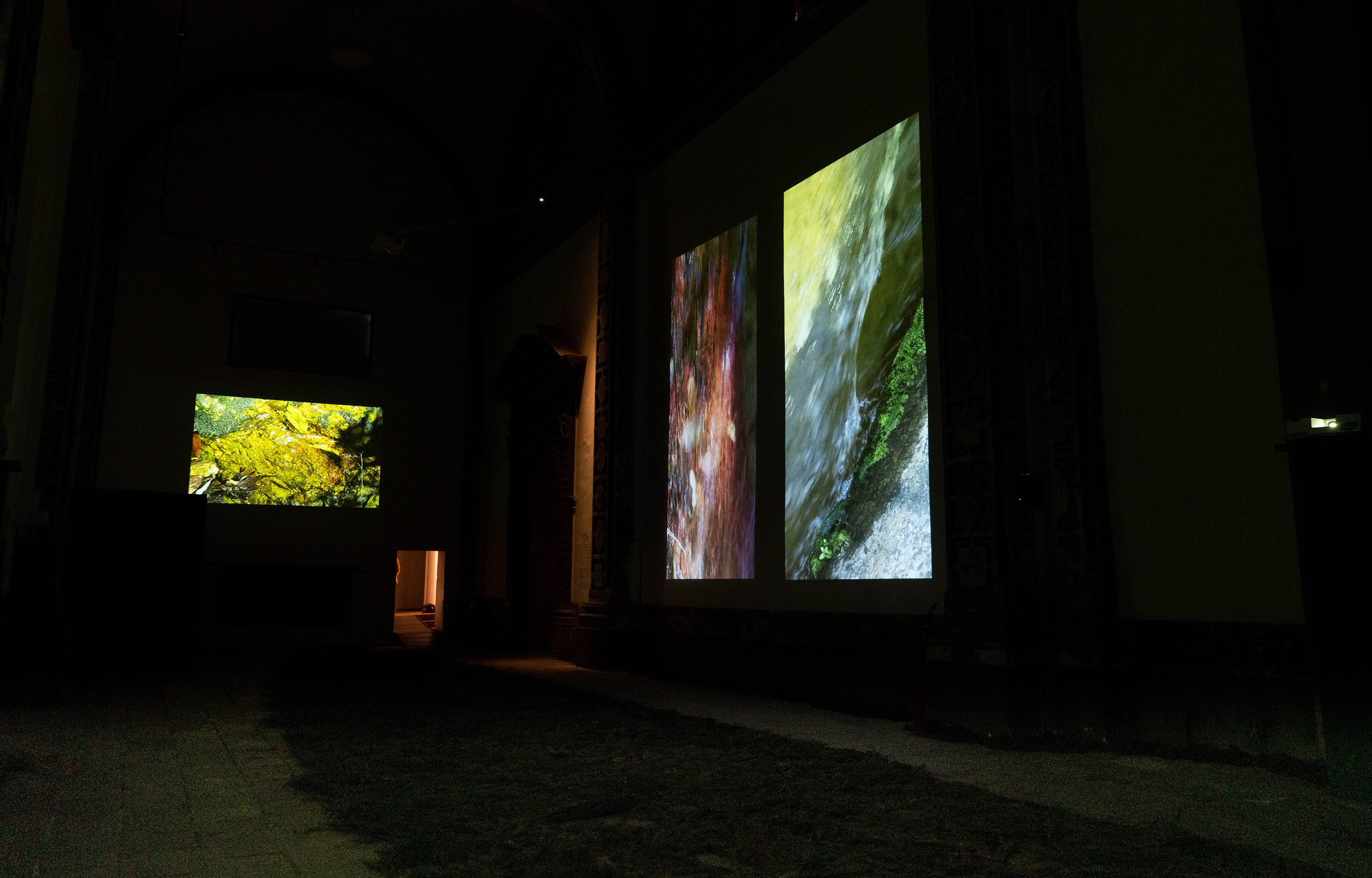
Review
Listening is Will: Israel Martínez
by Eric Valencia
At Ex Teresa Arte Actual
Reading time
5 min
Anger is a gift
Rage Against the Machine
The voice, like a stone that we can throw beyond our body’s extension, with no more thrust than itself, at will.

The work presented by Israel Martínez in his most recent exhibition, titled Escuchar es voluntad (“Listening is Will”), and curated by Amanda de la Garza at Ex Teresa Arte Actual, can be read as a reflection on the property of voice. Property in its two senses: both the voice’s qualities of sound and expression, and its dimension of belonging. Whose voice is this that I am listening to, and what is it telling me? The voice, like a stone that, in being thrown, and in its velocity and shape, delivers a message, a high level of demand for being heard, and that, at the same time, carries the range of whoever emits it. But if listening is the will, listening is the body that receives, that which extends its attention like a hand, to greet, to defend, to be raised. Its object of reception is internal and external at the same time: we can return a stone, but not a sound, unless it is something we incorporate. Listening is the will to incorporate, to integrate that range of the other in ourselves, with its velocities and its powers.
In this transaction, the voice is a willing object, a resource, a kind of common good. As such, it is also willing to be co-opted, expropriated, administered in the hyperbureaucratization that the power apparatuses exert on it. In this imposed procedure, making oneself heard—by the power apparatuses, or through them—implies a strategic articulation of the voice and the body in order to cross past their customs patrol, to spread, to free itself from the administrative forms imposed on it. Listening with will and making oneself heard are two extremes of the same object, the voice, something introduced with docility or resistance in a biopolitical economy.

The work Bestias (“Beasts”) is punctual in the tone of this reflection. Located in the chapel, it consists of a neon sign suspended several meters high, reading Ira (“Anger”) in a typeface created by Emicel Guillén. The piece is also formed by an 8-channel audio installation reproducing a free a cappella improvisation performed by the artists Bárbara Lázara, a guttural poet, and Edgardo González, vocalist of the death metal group Cenotaph. The voice of both artists is re-articulated: first, in the recognition of their own bodies as territories in conflict, from which they search for zones not co-opted by the mannerisms of “correct ways” of articulating the voice. For, are these ways not a simultaneous modulation of the body and of subjectivity as a consequence of colonialism, racialization, and the delimitation of those expressive possibilities induced by gender roles?

In an almost opposite configuration we find Flujo (“Flow”), carried out in collaboration with Elisa Schmelkes, No Coro, and Diego Martínez. The work consists of an installation of 5 video channels, 4 audio channels, and a pine-leaf carpet placed in the central nave. Flujo presents a re-codification of the devices commonly associated with the liturgy, as well as a series of complex referential frameworks. The leaf carpet, Martínez tells us, comes from a ritual performed in the Church of San Juan Chamula, the product of a mix of typical Mayan religious beliefs and of Catholicism. This operation of syncretism extends to the pagan territories of neoliberal politics, the work thus leading to a form of economic manifesto: the audio channels allow us to listen to a song in the form of a litany divided into two moments, a solo describing specific data on the distribution of wealth in the world, and a chorus replicating (supplicating for?) measures to restrict such a distribution. Meanwhile, videos projected on the walls display river flows that the artist recorded in San Agustín Etla and San Baltazar Guelavila, Oaxaca. The water runs from bottom to top, from south to north. In addition to evoking nature, the videos make reference to the pious compositions of those altarpieces that enjoin supplicants to raise their prayers to the highest realms, at the same time that divine attention descends onto them in the form of light, in a clear metaphor of the hierarchical organization characterizing both the global economy and the distribution of grace and disgrace.


Flujo and Bestias trace a vertical axis over a problematic of the distribution of voice that runs from macro to micro: from its global dimensions to its modulations in particular bodies. Both function as extremes between which are placed the other works making up the exhibition; we can take into consideration that, despite their differences, they all operate on a substrate that is worth noting: they were works carried out in collaboration, in an explicit will to listen.
Video in high quality here.
The exhibition is extended and will re-open as soon as the museum gets the green light.
Published on April 16 2020